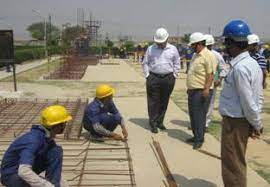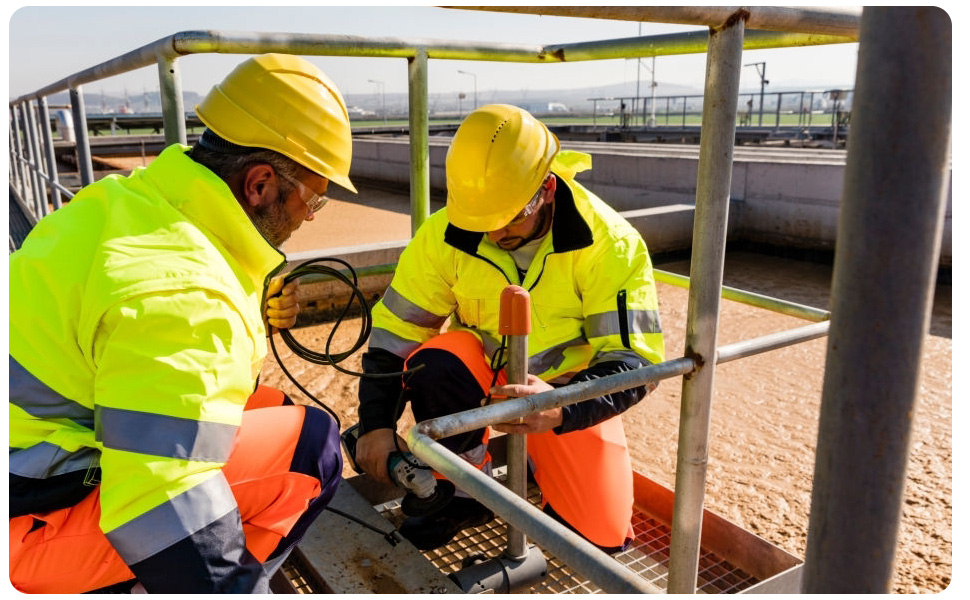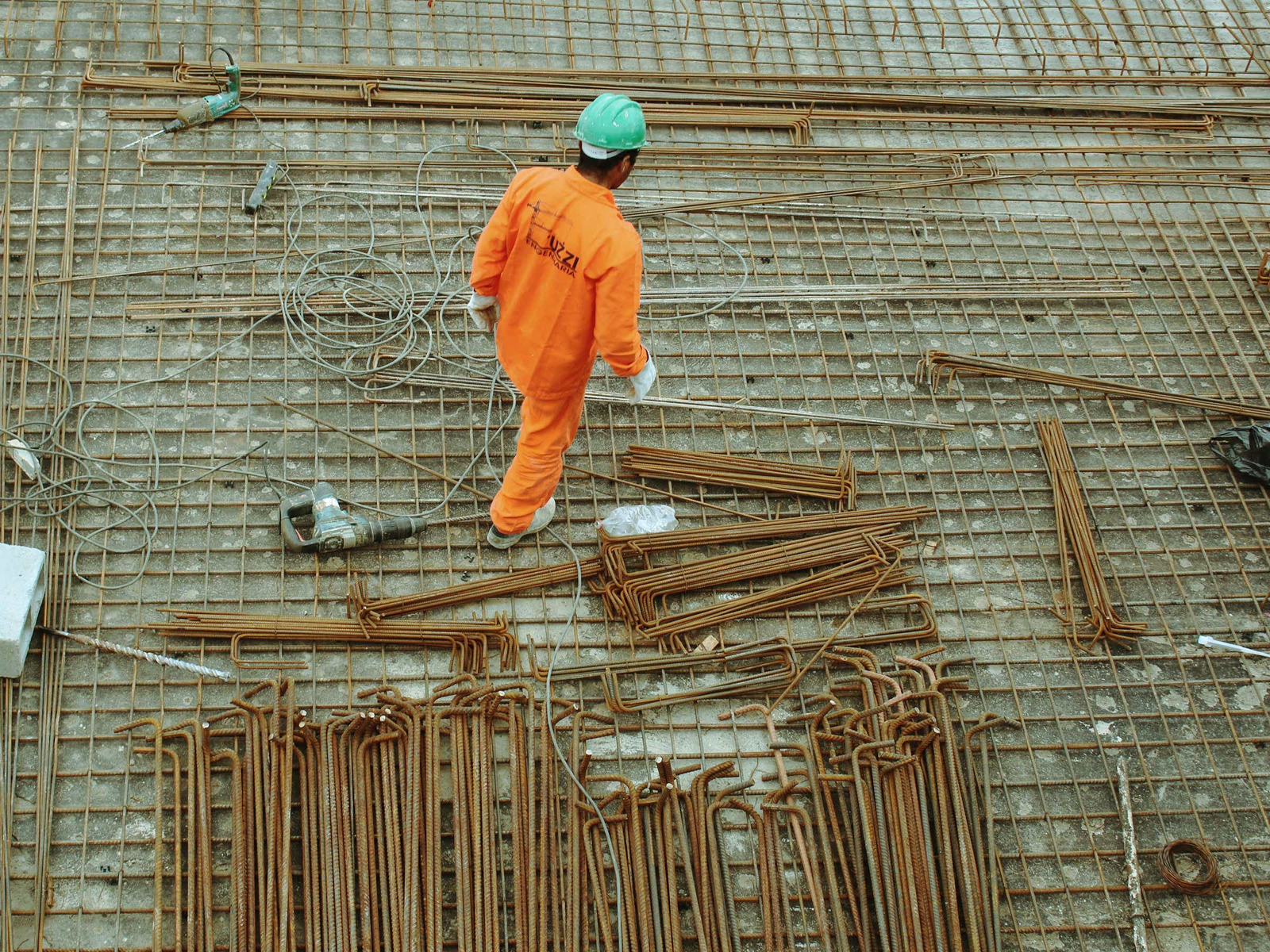Helper Electrician ( 6 month course)
Helper Electrician click here
Brief Job Description
The job role is responsible for helping the construction electrician and performing tasks under instructions and close supervision. The responsibilities also include performing preparatory works prior to temporary and permanent electrical installations and handling of tools, devices, and materials used to perform electrical works.

Personal Attributes
This job holder is expected to be physically fit to work across various locations with varied environmental
conditions. The individual should be team-oriented and safety-driven.
Handle different tools, measuring devices and materials relevant to LV(low voltage) electrical works
Description
This unit describes the skills and knowledge required to identify and handle different tools, measuring
devices, and materials relevant to LV electrical works
Scope
The scope covers the following :
Handle tools, accessories, and electrical devices.
Handle and shift material and fixtures relevant to LV electrical works.
Elements and Performance Criteria
Handle tools, accessories and electrical devices
To be competent, the user/individual on the job must be able to:
PC1. use different hand tools like screw driver, pliers, wire strippers, voltage testers, insulation
tapes, hacksaw and other tools relevant to LV(low voltage) electrical works
PC2. use power tools like drill machine, hand cutting machine, hand grinding machine required to
carry out LV electrical installation work
PC3. use measuring tape, plumb bob, spirit level, line thread and other relevant hand tools for
carrying out checks in alignment of works
PC4. handle common electrical measuring devices like multimeter, earth tester, tong tester and
megger required to undertake LV electrical tests/ inspections
PC5. handle common construction equipment’s like steel cutting & bending machine, welding
machine, vibrators, pumps, motors, tower cranes, batching plants etc.
PC6. identify Lock Out Tag Out (LOTO) –shutdown requirements at construction sites
Handle and shift material and fixtures relevant to LV electrical works
To be competent, the user/individual on the job must be able to:
PC7. select electrical materials and fixtures like wires, cables, conduits, clamps, lights, miniature
circuit breakers, switches, sockets, starters and related accessories
PC8. check for breakages, cracks, dampness, corrosions etc. in the electrical materials and
fixtures prior to use
PC9. shift lights, cables, conduits, cable trays, brackets, DBs, ladders and other relevant materials
to the appropriate work locations as per directions
PC10. inspect material storage location on-site for safe storage condition which includes avoiding
vicinity of water, fire, direct sunlight, service lines, existing electrical lines and ongoing
construction works etc.
PC11. store and stack electrical materials at work locations as per instructions/standard practices
PC12. provide protective cover, erect barricades, signages around the stacked materials
adequately as per instructions
PC13. carry out housekeeping at work locations before and after completion of work
Knowledge and Understanding (KU)
The individual on the job needs to know and understand:
KU1. general and electrical safety rules applicable to different activities at construction works
KU2. safety rules and regulations for handling and storing required tools, equipment, and
materials
KU3. service request procedures for tools, materials and equipment as per organizational norms
KU4. importance of personal protection including the use of related safety gears & equipment in
accordance with organizational norms
KU5. area of use of common electrical hand and power tools like screw drivers, wire cutters, wire
strippers, pliers, hammers, hacksaws, chisels, spanners, wrenches etc.
KU6. use of measuring devices like ammeter, earth tester, tong tester, megger, etc.
KU7. various types of cables, wires, conduits and their use in LV electrical connections
KU8. common types of fixtures like switches, brackets, sockets, plugs, tops and their use
KU9. types of circuit breakers, starters, relays and their area of application
KU10. physical and chemical properties of materials that are good conductors, semi-conductors,
and bad conductors
KU11. concept of electrical current flow and factors which influence electrical flow through
conductors
KU12. use of appropriate fire safety equipment like sand bucket, fire extinguisher, goggles, gloves
etc. as per requirement
KU13. use of measuring equipment like measuring tape, plumb bob, level tube/pipe, marking tools,
etc. and their respective area of use
Generic Skills (GS)
User/individual on the job needs to know how to:
GS1. write in one or more languages, preferably in the local language of the site
GS2. read work and safety-related instructions/signboards, etc. in one or more languages,
preferably in the local language of the site

GS3. speak in one or more languages, preferably in one of the local language of the site
GS4. listen attentively to instructions communicated by supervisors
GS5. communicate orally and efficiently with team members
GS6. analyze the safety aspect of the workplace
GS7. plan work to achieve productivity as per the direction /close supervision of superiors
GS8. ensure work is done within time and as per desired quality based on instructions provided by
superiors
GS9. identify any violation of safety norms during the work
Carry out wall chasing and external threading on MS(mild steel) conduit
Description
This unit describes the skills and the knowledge required to carry out wall chasing and external threading
on MS conduit
Scope
The scope covers the following :
Carry out preparatory work prior to concealed wiring work
Chase wall as per marking and assist in conduit laying as per instructions
Carry out external threading on MS conduit
Elements and Performance Criteria
Carry out preparatory work prior to concealed wiring work
To be competent, the user/individual on the job must be able to:
PC1. arrange and stack the required hand and power tools at the identified job location
PC2. arrange and stack electrical materials such as cables, wires, conduits and fixtures required
for wall chasing and LV(Low Voltage) wiring work
PC3. carry out measurement and marking on wall surface using appropriate tools as per
instruction
PC4. check the working condition of tools and materials and perform the required basic
maintenance
Chase wall as per marking and assist in conduit laying as per instructions
To be competent, the user/individual on the job must be able to:
PC5. use appropriate PPE for carrying out chasing activity
PC6. carry out firm cutting on wall surface using wall chasing machine as per marking while
maintaining uniform depth
PC7. finish the wall chasing work using hand tools as per standard practice maintaining the
required dimension
PC8. measure, mark and cut cables and conduits as per instruction using appropriate tools
PC9. bend and join conduits as per requirement using appropriate tools
PC10. assist in placing conduits and cables/ wires and trough the same for permanent LV wiring
works
PC11. clean the work locations after completion of work and dispose debris to appropriate location
PC12. assist senior in laying cables such as power and communication cables as per instructions
Carry out external threading on MS(mild steel) conduit
To be competent, the user/individual on the job must be able to:
PC13. carry out measurement & marking on the MS conduits
PC14. hold the conduit in pipe vice as per standard practice
PC15. cut the conduit at marking point and carry out the edge finishing using appropriate tools
PC16. fix die cutter in die stock per instructions and use lubricants as per applicability
PC17. carry out the threading activity following the applicable trade safety norms
PC18. maintain standard housekeeping practice at the workplace
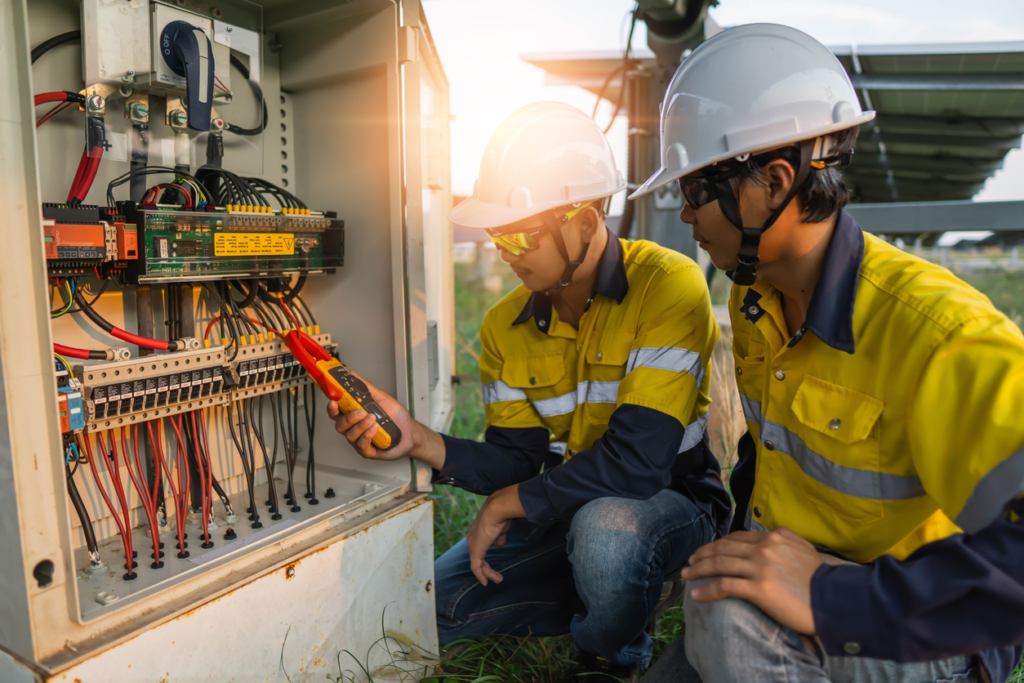
Knowledge and Understanding (KU)
The individual on the job needs to know and understand:
KU1. general and electrical safety rules applicable to different activities at construction works
KU2. standard organizational practices followed for the electrical works
KU3. safety rules and regulations for handling and storing required relevant tools, equipment, and
materials
KU4. service request procedures for tools, materials and equipment as per organizational norms
KU5. hand tools to be used in wall chasing work like chisel, hammer, nails etc.
KU6. power tools to be used in wall chasing works like wall chasing machine, drill machine, cutting
saws etc.
KU7. hand tools/ instruments used for marking and measurement prior to carrying out chasing
activity
KU8. hand tools such as hacksaws, files, hand cutting machine etc. used for cutting conduits
KU9. how to operate hand cutting machine and hand drill machine and the PPEs required while
operating these machines
KU10. depth of chasing as per the wall thickness and diameter of the conduit
KU11. how to operate vice or threading tool
KU12. basics of electrical charge, current flow and their types
KU13. concept of conductors and semiconductors including their physical properties
KU14. parameters involved in electrical circuits such as voltage, electrical current flow, resistance,
heat etc. their signs, units, and conversions
KU15. electrical elements that have thermal influences on circuits
KU16. safe procedure of termination and joining of cables
KU17. hazards and risks involved in LV electrical works and standard safety norms to be followed
Generic Skills (GS)
User/individual on the job needs to know how to:
GS1. write in one or more languages, preferably in the local language of the site
GS2. read work and safety-related instructions/signboards, etc. in one or more languages,
preferably in the local language of the site
GS3. speak in one or more languages, preferably in one of the local language of the site
GS4. listen attentively to instructions communicated by supervisors
GS5. communicate orally and efficiently with team members
GS6. analyze the safety aspect of the workplace
GS7. plan work to achieve productivity as per the direction /close supervision of superiors
GS8. • ensure work is done within time and as per desired quality based on instructions provided by
• superiors
GS9. identify any violation of safety norms during the work
Erect and dismantle scaffold up to 3.6 meter height
Description
This unit describes the skills and knowledge required to erect and dismantle a temporary scaffold up to 3.6 meters in height
Scope
The scope covers the following :
Perform erection and dismantling of 3.6-metre scaffold
Elements and Performance Criteria
Perform erection and dismantling of 3.6-metre scaffold
To be competent, the user/individual on the job must be able to:
PC1. use required PPE and safety gadgets for scaffold erection
PC2. prepare a compacted and leveled surface for the erection of scaffold as per requirement
PC3. shift and stack required materials, components, tools and tackles at the instructed location
PC4. place base plates and sole boards on the ground as per markings and instructions
PC5. erect temporary scaffold up to 3.6 meters’ height using proper components and standard
erection procedure following trade safety
PC6. check the verticality of the scaffold at every level of erection before moving to the next level
PC7. check for rigidity, stability and support of the erected scaffold
PC8. fix walk-boards, guard rails, toe-boards, and other components on the working platform
PC9. dismantle the temporary scaffold following the standard procedure
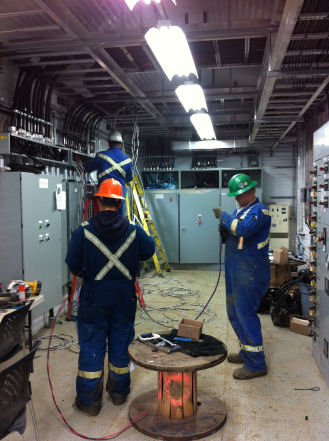
PC10. remove guard rails, toe boards, walk boards and other components sequentially
PC11. clean and stack all components properly after dismantling
PC12. maintain tidiness at work location
Knowledge and Understanding (KU)
The individual on the job needs to know and understand:
KU1. standard procedure for scaffolding works
KU2. safety rules and regulations for handling and storing scaffolding tools, materials and
components
KU3. importance of personal protection including the use of safety gears and equipment
KU4. service request procedures for tools, materials and equipment as per organizational norms
KU5. housekeeping works as per environmental norms
KU6. use of different types of scaffolds (cup-lock , frame scaffold)
KU7. use of various tools and tackles in scaffolding works
KU8. identification, standard size, and use of different components of the scaffold
KU9. basic arithmetic calculation
KU10. units of measurements
KU11. importance of housekeeping
KU12. standard procedure for erection and dismantling of 3.6 m temporary scaffold
Generic Skills (GS)
User/individual on the job needs to know how to:
GS1. write in one or more language, preferably in the local language of the site
GS2. read work and safety-related instructions/signboards in one or more languages, preferably in
the local language of the site
GS3. speak in one or more language, preferably in one of the local languages of site
GS4. listen attentively to instructions communicated by superiors
GS5. communicate orally and efficiently with team members
GS6. plan work to achieve productivity as per the direction /close supervision of superiors
GS7. ensure work is done within time and as per desired quality based on instructions provided by
superiors
GS8. analyze the safety aspect of the workplace
GS9. identify any violation of safety norms during the work
Work effectively in a team to deliver desired results at the workplace
Description
This unit describes the skills and knowledge required to work effectively within a team to achieve the
desired results
Scope
The scope covers the following :
Interact and communicate effectively with co-workers, superiors and sub-ordinates across different
teams
Support co-workers, superiors and sub-ordinates within the team and across interfacing teams to
ensure effective execution of assigned task
Acknowledge and show sensitivity to disability, culture and gender diversity
Elements and Performance Criteria
Interact and communicate effectively with co-workers, superiors and sub-ordinates across different teams
To be competent, the user/individual on the job must be able to:

PC1. pass on work related information/ requirement clearly to the team members
PC2. inform co-workers and superiors about any kind of deviations from work
PC3. address the problems effectively and report if required to immediate supervisor
appropriately
PC4. receive instructions clearly from superiors and respond effectively on the same
PC5. communicate to team members/subordinates for appropriate work technique and method
PC6. seek clarification and advice as per the requirement and applicability
• Support co-workers, superiors and sub-ordinates within the team and across interfacing teams to
ensure effective execution of assigned task
To be competent, the user/individual on the job must be able to:
PC7. hand over the required material, tools tackles, equipment and work fronts timely to
interfacing teams
PC8. work together with co-workers in a synchronized manner
Acknowledge and show sensitivity to disability, culture and gender diversity
To be competent, the user/individual on the job must be able to:
PC9. follow practices which are sensitive to disability, culture and gender diversity.
PC10. respond to attitude and behaviour which are aggressive, abusive or discriminatory, in a
professional manner and as per organizational policy
Knowledge and Understanding (KU)
The individual on the job needs to know and understand:
KU1. own roles and responsibilities
KU2. importance of effective communication and establishing strong working
KU3. risks of a failure in teamwork in terms of effects on project outcomes, timelines, safety at the
construction site, etc.
KU4. different modes of communication, and its appropriate usage
KU5. importance of creating healthy and cooperative work environment among the gangs of
workers
KU6. different activities within his work area where an interaction with other workers is required
KU7. applicable techniques of work, properties of materials used, tools and tackles used, safety
standards that co- workers might need as per the requirement
KU8. importance of proper and effective communication and the expected adverse effects in case
of failure relating to quality, timelines, safety, risks at the construction project site
KU9. importance and need of supporting co-workers facing problems for smooth functioning of
work
KU10. the fundamental concept of gender equality
KU11. how to recognize and be sensitive to issues of disability, culture and gender
Generic Skills (GS)
User/individual on the job needs to know how to:
GS1. write in at least one language, preferably in the local language of the site
GS2. read in one or more languages, preferably the local language of the site
GS3. read communication from team members regarding work completed, materials used, tools
and tackles used, support required
GS4. speak in one or more languages, preferably in one of the local language of the site
GS5. listen and follow instructions / communication shared by superiors/ co-workers regarding
team requirements or interfaces during work processes
GS6. communicate orally with co-workers regarding support required to complete the respective
work
GS7. decide on what information is to be shared with co-workers within the team or from
interfacing gang of workers
GS8. plan work and organize required resources in coordination with team members
GS9. complete all assigned task in coordination with team members
GS10. take initiative in resolving issues among co-workers or report the same to superiors
GS11. ensure best ways of coordination among team members
GS12. communicate with co-workers considering their educational / social background
GS13. evaluate the complexity of task and determine if any guidance is required from superiors
Work according to personal health, safety and environment protocols at construction site
Description
This NOS covers the skill and knowledge required for an individual to work according to personal health,
safety and environmental protocol at construction site
Scope
The scope covers the following :
Follow safety norms as defined by organization
Adopt healthy & safe work practices
Implement good housekeeping and environment protection process and activities
Follow infection control guidelines as per applicability
Elements and Performance Criteria
Follow safety norms as defined by organization
To be competent, the user/individual on the job must be able to:
PC1. identify and report any hazards, risks or breaches in site safety to the appropriate authority
PC2. follow emergency and evacuation procedures in case of accidents, fires, natural calamities
PC3. follow recommended safe practices in handling construction materials, including chemical
and hazardous material whenever applicable
PC4. follow all the protocols and safety techniques conveyed during safety awareness programs
like Tool Box Talks, safety demonstrations and mock drills conducted at the site
PC5. • select and operate different types of fire extinguishers corresponding to various types of fires
• as per EHS guideline
PC6. identify near miss , unsafe condition and unsafe act
Adopt healthy & safe work practices
To be competent, the user/individual on the job must be able to:
PC7. use appropriate Personal Protective Equipment (PPE) as per work requirements including:
Head Protection (Helmets) Ear protection Fall Protection Foot Protection Face and Eye
Protection, Hand and Body Protection Respiratory Protection (if required)
PC8. handle all required tools, tackles , materials & equipment safely
PC9. follow safe disposal of waste, harmful and hazardous materials as per EHS guidelines
PC10. check and install all safety equipment as per standard guidelines
PC11. follow safety protocol and practices as laid down by site EHS department
PC12. obtain “height pass” clearance for working at heights
Implement good housekeeping practices
To be competent, the user/individual on the job must be able to:
PC13. • collect, segregate and deposit construction waste into appropriate containers based on their
• toxicity or hazardous nature
PC14. apply ergonomic principles wherever required
Follow infection control guidelines as per applicability
To be competent, the user/individual on the job must be able to:
PC15. follow recommended personal hygiene, workplace hygiene and sanitization practices
PC16. clean and disinfect all materials, tools and supplies before and after use
PC17. • report immediately to concerned authorities regarding signs and symptoms of illness of self
• and others
Knowledge and Understanding (KU)
The individual on the job needs to know and understand:
KU1. reporting procedures in cases of breaches or hazards for site safety, accidents, and
emergency situations as per guidelines
KU2. types of safety hazards at construction sites
KU3. basic ergonomic principles as per applicability
KU4. the procedure for responding to accidents and other emergencies at site
KU5. use of appropriate personal protective equipment based on various working conditions
KU6. importance of handling tools, equipment, and materials as per applicable norms
KU7. effect of construction material on health and environments as per applicability
KU8. various environmental protection methods as per applicability
KU9. storage of waste including non-combustible scrap material and debris, combustible scrap
material and debris, general construction waste and trash (non-toxic, non-hazardous), any
other hazardous wastes and any other flammable wastes at the appropriate location
KU10. how to keep the workplace neat and tidy so as to be safe
KU11. how to use hazardous material in a safe and appropriate manner as per applicability
KU12. types of fire
KU13. procedure of operating different types of fire extinguishers
KU14. safety relevant to tools, tackles, and equipment as per applicability
KU15. housekeeping activities relevant to task
KU16. ways of transmission of infection
KU17. ways to manage infectious risks at the workplace
KU18. different methods of cleaning, disinfection, sterilization, and sanitization
KU19. symptoms of infection like fever, cough, redness, swelling, and inflammation
Generic Skills (GS)
User/individual on the job needs to know how to:
GS1. write in at least one language, preferably in the local language of the site
GS2. fill safety formats for near miss, unsafe conditions and safety suggestions
GS3. read in one or more language, preferably in the local language of the site
GS4. speak in one or more language, preferably in one of the local language of the site
GS5. listen to instructions/communication shared by site EHS and superiors regarding site safety,
and conducting the toolbox talk
GS6. identify potential safety risks and report to the appropriate authority
GS7. • assess and analyze areas which may affect health, safety and environment protocol on the
• site


